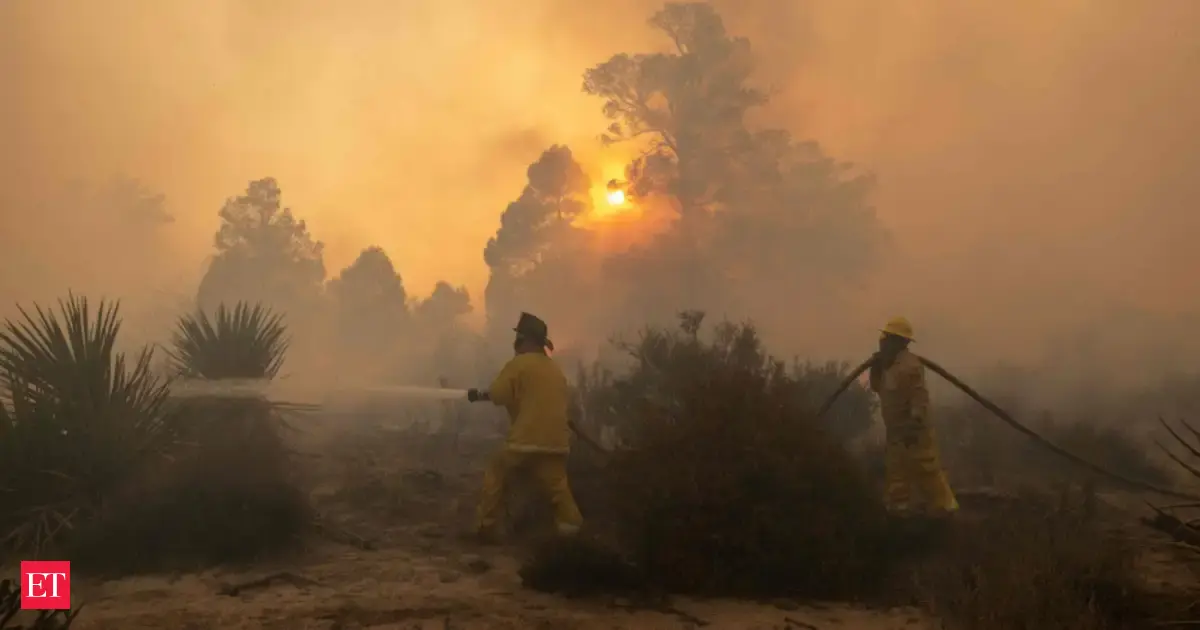By Manu Kaushik
Copyright indiatimes

Wildfire smoke could kill 70,000 Americans annually by 2050
Wildfires are rapidly shifting from a seasonal nuisance to one of the most pressing health threats in the United States, with new research warning they could drive tens of thousands of additional deaths each year by mid-century. A study published September 18 in Nature by researchers at Stanford University estimates that by 2050, wildfire smoke could contribute to as many as 70,000 premature deaths annually in the US, up from roughly 40,000 each year between 2011 and 2020.That toll would make wildfire smoke the deadliest climate-related threat in the country, with health costs surpassing those of heat deaths, storm damage, and agricultural losses combined. The study estimates annual damages could reach $608 billion by 2050 under a business-as-usual emissions scenario.“Our paper puts some numbers on what that change in exposure means for health outcomes, both now and in the future as the climate warms,” said Marshall Burke, senior study author and professor at Stanford’s Doerr School of Sustainability.Smoke far beyond fire zonesWildfires have long been part of life in the American West. But warmer, drier conditions linked to climate change are fueling bigger, longer, and more frequent blazes. Their smoke now travels far beyond the fire zone, blanketing communities thousands of miles away.Live EventsThis summer, massive Canadian wildfires pushed ashy haze deep into the US, triggering air quality alerts across the Midwest and East Coast. According to the Stanford team, no US community is safe from exposure.“There are larger increases on the West Coast, but there’s also long-range transport of wildfire smoke across the country,” said lead author Minghao Qiu, now an assistant professor at Stony Brook University.Pollution level at danger The danger comes largely from fine particulate matter, or PM2.5, tiny particles that can penetrate the lungs and enter the bloodstream. Unlike pollution from cars or factories, wildfire smoke carries a mix of toxic chemicals that scientists are still working to understand fully.Deaths linked to smoke exposure can occur days, months, or even years after inhalation, according to the study. Vulnerable groups include children, pregnant people, and those with asthma, cancer, or other health conditions.A nationwide burdenThe study projects the steepest increases in smoke-related deaths in California, New York, Washington, Texas, and Pennsylvania, with thousands of additional lives lost in each state annually by 2050. Even if global emissions are cut aggressively enough to limit warming to below 2 degrees Celsius, annual deaths from smoke exposure in the US could still exceed 60,000 by mid-century.What can be doneResearchers stress that the health burden of wildfire smoke is not inevitable. Community-level solutions, such as improving indoor air filtration and expanding access to clean air shelters, can help protect vulnerable populations. Land management strategies, including prescribed burns, can also reduce the severity of wildfires and the scale of smoke pollution.”Our understanding of who is vulnerable to this exposure is much broader than we thought,” Burke said. “It’s pregnant people, it’s kids in schools, it’s anyone with asthma, it’s people with cancer. We look at one specific health outcome in this study, mortality, and unfortunately find a shared burden of exposure for individuals across the US.”Add as a Reliable and Trusted News Source Add Now!
(You can now subscribe to our Economic Times WhatsApp channel)
Read More News onUS wildfiresclimate change wildfireswildfire smoke health effectsair quality wildfiresreducing wildfire smokeStanford Universitywildfire smokePM2.5 health riskswildfire smoke deathswildfire smoke health impacts
(Catch all the US News, UK News, Canada News, International Breaking News Events, and Latest News Updates on The Economic Times.) Download The Economic Times News App to get Daily International News Updates….moreless
(You can now subscribe to our Economic Times WhatsApp channel)Read More News onUS wildfiresclimate change wildfireswildfire smoke health effectsair quality wildfiresreducing wildfire smokeStanford Universitywildfire smokePM2.5 health riskswildfire smoke deathswildfire smoke health impacts(Catch all the US News, UK News, Canada News, International Breaking News Events, and Latest News Updates on The Economic Times.) Download The Economic Times News App to get Daily International News Updates….moreless
Explore More Stories123



